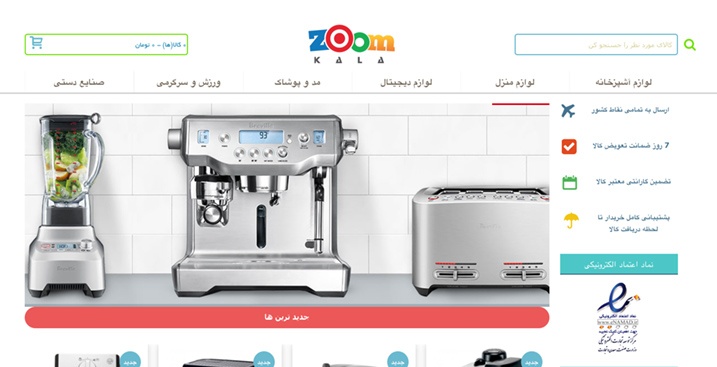Working with a tight budget is a reality of most budding small business owners. When you are setting up your online store, you may be lured in with the promises of free trials, especially if you are a digital newbie.
Yet soon enough you may find out that nothing will work quite right unless you upgrade and pay. This is why we decided to make a comparison between different business software to find the best free e-commerce platform where free really means free.
Before we move on to free e-commerce platform showdown, it is important to say this – starting an online business cannot come for free 100%. But you can significantly budget your investment if you know how to combine the right tools. A little bit of research and extra time can go a long way – both when it comes to short-term and long-term expenses.
This is why I strongly recommend that you start your journey by reading this detailed guide on how to start an online store. In that article, I provided a detailed list of basic requirements for e-commerce beginners, along with pricing and pros and cons for each option. As you may see, choosing the right e-commerce platform can save you up to thousands of dollars – so let’s see what your options are.
We searched review site Capterra and filtered exclusively e-commerce platforms with a 4+ star rating. These made the cut – and most of them come with some sort of disclaimer or twist.
Top rated
Top rated free e-commerce platforms reached 4.5/5 stars based on thousands of user ratings.
1. Magento
While Magento’s free e-commerce platform won’t cost you a dime, instead of money you’ll have to invest your time and expertise in coding. I repeat, don’t even try to tackle Magento unless you are an experienced coder or have one on your team. Also, don’t forget that even with a free e-commerce platform, you still have to pay for hosting, SSL certificate and payment processor.

If you have that settled, you are in for a smooth ride. For $0, you’ll be able to set up your online store however you like, without limitations of pre-designed templates and default settings. Magento’s free e-commerce platform provides:
- Responsive online shop you can build from scratch
- Product and catalog management
- Checkout, payment and shipping management
- Site management
- Promotions engine (it will enable you to run coupons, discounts, giveaways and other conversion optimization tricks on your website)
Magento’s large add-ons marketplace offers extensions you need to equip your online store with optimization and conversion tools. Some of them are costly, but you can find plenty of integrations that come for free. Also, there are a lot of available themes online that will give your store an attractive look.
Downsides
Keep in mind that Magento’s paid plans are rather robust, effective and insanely expensive, so they are usually recommended to online sellers with large sales volume. If you have an intention to upgrade after a while, switching to another platform may complicate things for you.
Another (obvious) problem with using Magento’s free e-commerce platform is the fact that you are pretty much on your own if you have any issues with making things work. Unless you are on a paid plan, there is no customer support that will immediately solve your problems with Magento-powered online store.
2. Wix
Wix is an absolute darling among free e-commerce platforms because it swings three ways to cover all the potential customers with various levels of tech expertise. They offer Wix Artificial Design Intelligence, Wix Editor, & Wix Code, so you can pick accordingly based on whether you are a pro or someone who dreads even the thought of hours and hours of clicking.

Wix provides:
- Drag & drop editor for building an online store
- 100+ pre-designed templates + product galleries
- Tracking your orders and inventory
- Multiple payment options with no sales commission
- Promotional engine
- Shipping and tax management
With 4.5/5 rating based on more than 1300 reviews, Wix delivers solid performance on all fields. It is adjusted for different types of users and there is customer support in case you are facing any problems.
Downsides:
The free version does not allow you to personalize your website’s domain – your online store can only exist as a subdomain of Wix. This means your address will be onlineshp.wixsite.com. Also, the free version comes with Wix advertisements placed on your website and some limitations on website storage.
That being said, using numerous automating tools and extensions may slow down your online store. The upside to this downside is that paid plans, if you choose to upgrade and stay on this e-commerce platform, provide great value for money.
Runner-ups
Both of these free e-commerce platforms received a 4 out of 5 stars rating based on more than 100 reviews.
3. OpenCart
I decided to give priority to Open Cart, which is a newcomer on the e-commerce market. In only one year, Open Cart managed to attract a considerable number of users, showing that the platform is in for rapid development, thus likely to overcome its downsides.
Just like Wix, Open Cart is a good solution for users who lack technological expertise but need basic e-commerce functions to start their online store. However, some coding knowledge may be required in the initial setup phase, so keep that in mind.

OpenCart provides:
- Sales Management
- Tax and Shipping management
- Multiple payment options
- Unlimited product catalog
- Downloadable products (good for drop shipping)
- Promotion engine
- Multistore management
- Multilingual support
- Email marketing automation
As you may notice, Open Cart offers a few specific perks such as being available in more than 40 languages, including Chinese, Japanese, Greek, and even right-to-left languages such as Arabic and Hebrew.
It also offers a basic email marketing tool, although I will tell you straight away, don’t expect it to work as sleek as paid tools such as ConvertKit.
Downsides
While it is user-friendly and capitalizes on several perks you can’t find on a stronger free e-commerce platform, Open Cart suffers from poor-compatibility with plugins and lack of easy integrations. This will take away a lot of flexibility you could have with another free e-commerce platform. Also, it needs quite a few updates to reach the level of stability and reliance you can find on Wix and Magento.
4. PrestaShop
Prestashop is one of the older players in the e-commerce market, founded in 2007. While it does deliver everything it promises for free, PrestaShop has been lagging behind its competitors lately.
Just like OpenCart, PrestaShop is a free e-commerce platform advertised as a solution for not-so-tech-savvy business beginners. Similarly, it is not quite so simple as advertised. The initial setup does require some coding knowledge or professional help.

However, it is relatively easy to understand PrestaShop and most (affordably priced) developers are capable of working with it. PrestaShop enables:
- Catalog Management
- Channel Management
- Customer Accounts
- Email Marketing
- Inventory Management
- Loyalty Program
- Multi-Store Management
- Multilingual support
- Order Management
- Product Configurator
- Returns Management
- SEO Management
- Shopping Cart
PrestaShop has been around for long enough, so you shouldn’t have significant problems with integrations. Just like with any free e-commerce platform, you should carefully calculate how much extensions can cost you, because you don’t want to end up with a “free” software that ended up being more costly than a simple Shopify basic plan.
Downsides
Nudged by the fact that it’s lagging behind its competitors, PrestaShop released a new version which isn’t quite stable and reliant. On the other hand, it promises to make things simpler and more effective compared to the old version, so that’s another dilemma you need to deal with if you decide to choose this free e-commerce platform.
Conclusion
If choosing the right e-commerce platform seems overwhelming at this point, here are some words of encouragement. In 2017, e-commerce generated around $2.3 trillion in sales, and this number is expected to double by 2021. In the United States, e-commerce contributes to almost 10% of retail sales on a yearly basis. This number is expected to grow by 15% annually. So, stick to your plan.
While my final recommendation is Wix, if you are having any second thoughts, the best thing you can do is try each of these platforms and see which one is the best fit.
Starting your online business takes a lot of research and knowledge, and we are here to help. Your next station could be this handy guide on starting an online shop on a tight budget or this comparison between online two most popular online payment solutions.